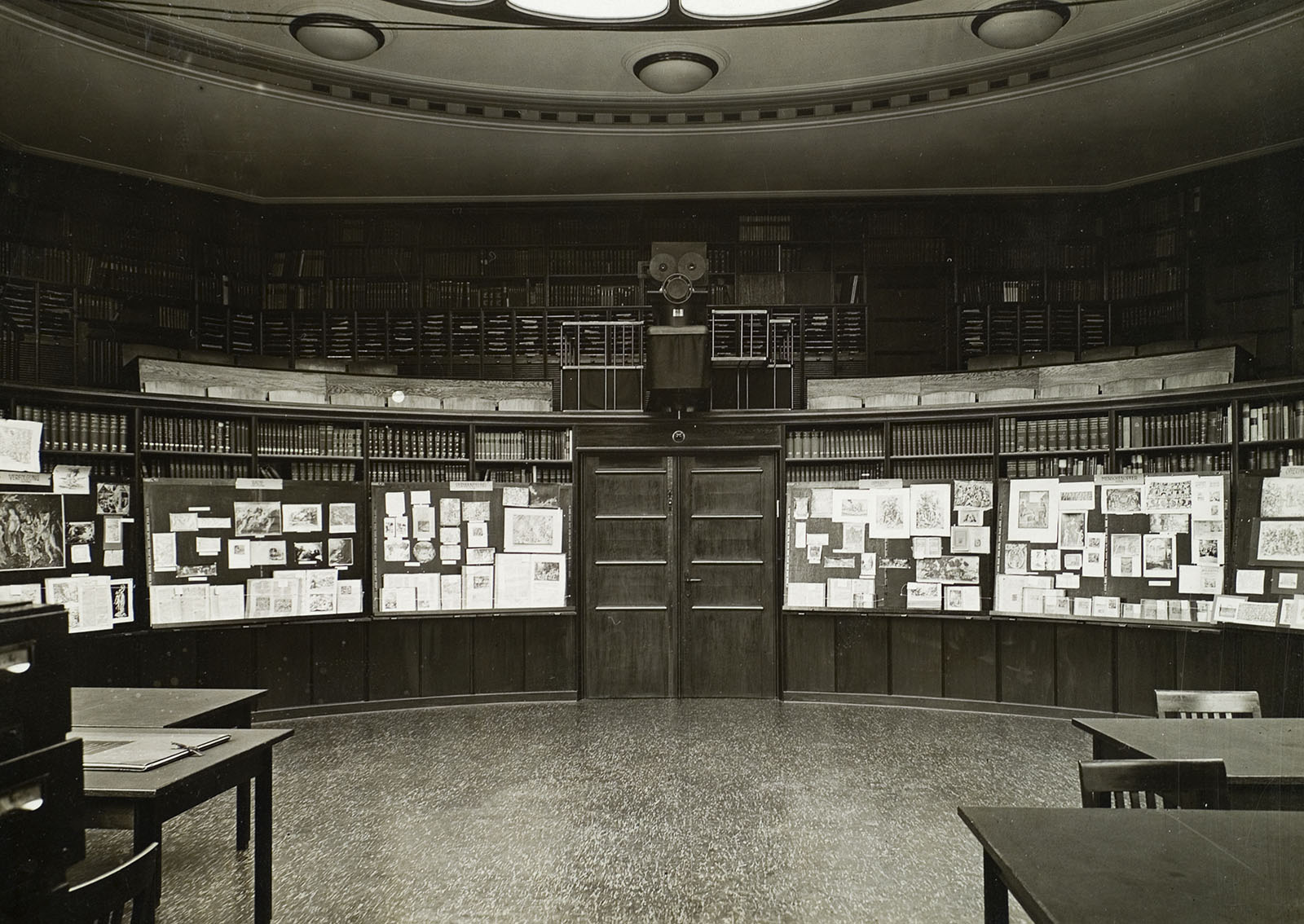Aby Warburg and the Mnemosyne Atlas

The work of German art historian and “cultural scientist” Aby Warburg (1866-1929) resonates strongly with a choreographic perspective because of the important place that human movement and gesture occupy in his understanding of art history and broader cultural history. ‘Dances, human gestures in general, make up the essential, the centre’ of Warburg’s perspective on art, art history and how they relate to knowledge-generation (Didi-Huberman 2018, p.13).
Rather than tracing art history through a linear sequence of successive stylistic shifts, Warburg was interested in tracing the recurrence of movements and gestures in images coming from disparate times and places – in particular from the ancient world to renaissance Europe and into the image cultures of his own period.
The Mnemosyne Atlas (original German title Bilderatlas Mnemosyne) was the final and culminative project that Warburg undertook in the years before his death in 1929. The Atlas is the most expansive and evolved embodiment of Warburg’s distinctive practice of non-linear knowledge-generation, which is the Warburgian epistemological orientation that I take the phrase Magic & Science to name.
The Atlas – which remained unfinished at the time of Warburg’s death – was formed of a series of large hessian-covered panels on which photographic reproductions of art historical images could be pinned and arranged in precise constellations. At the time of Warburg’s death, the Atlas consisted of 63 panels, on which approximately 1000 images were collected (Johnson 2016).
Art historian Georges Didi-Huberman describes how Warburg’s selection and composition of these images-of-movement in the Atlas aimed to generate a visual and sensible (felt) form of knowledge (2018, p.4), ‘an argument whose elements are not words or propositions’ (ibid, p.222) that would make it possible to (as Didi-Huberman invokes Walter Benjamin’s phrase) ‘read what was never written’ (ibid, p.21). Although the constellations were replete with layered meaning, they were never fixed. Different combinations of images were always possible and would yield new insights – movement of the images in relationship to one another was as key to the method as the movement in the images.
Didi-Huberman writes of the ability of Warburg’s methods to generate particular kinds of knowing via the visual, the gestural, the bodily, the intuitive, the non-rational and even the ‘quasi-divinatory’ (ibid, p.48). And through these qualities, 'immediately… the atlas bursts the frames’ (ibid, p.5) of conventional Western epistemologies.
The Atlas ‘has to do with a theory of knowledge that is devoted to the risk of the sensible [i.e. felt]... It deconstructs, with its very exuberance, the ideals of uniqueness, of specificity, of purity, of logical exhaustion. It is a tool… [for] the inexhaustible opening to possibilities that are not yet given. Its principle, its motor, is none other than the imagination’ (ibid, p.5).
In many ways, Didi-Huberman’s characterizations of the ways of knowing at work in Warburg’s Atlas strongly evoke qualities, interests and dynamics that are also at work in my experiences of choreographic no-how generation.
READ MORE in Section 6 of my written thesis, Magic & Science: a choreographic epistemological orientation